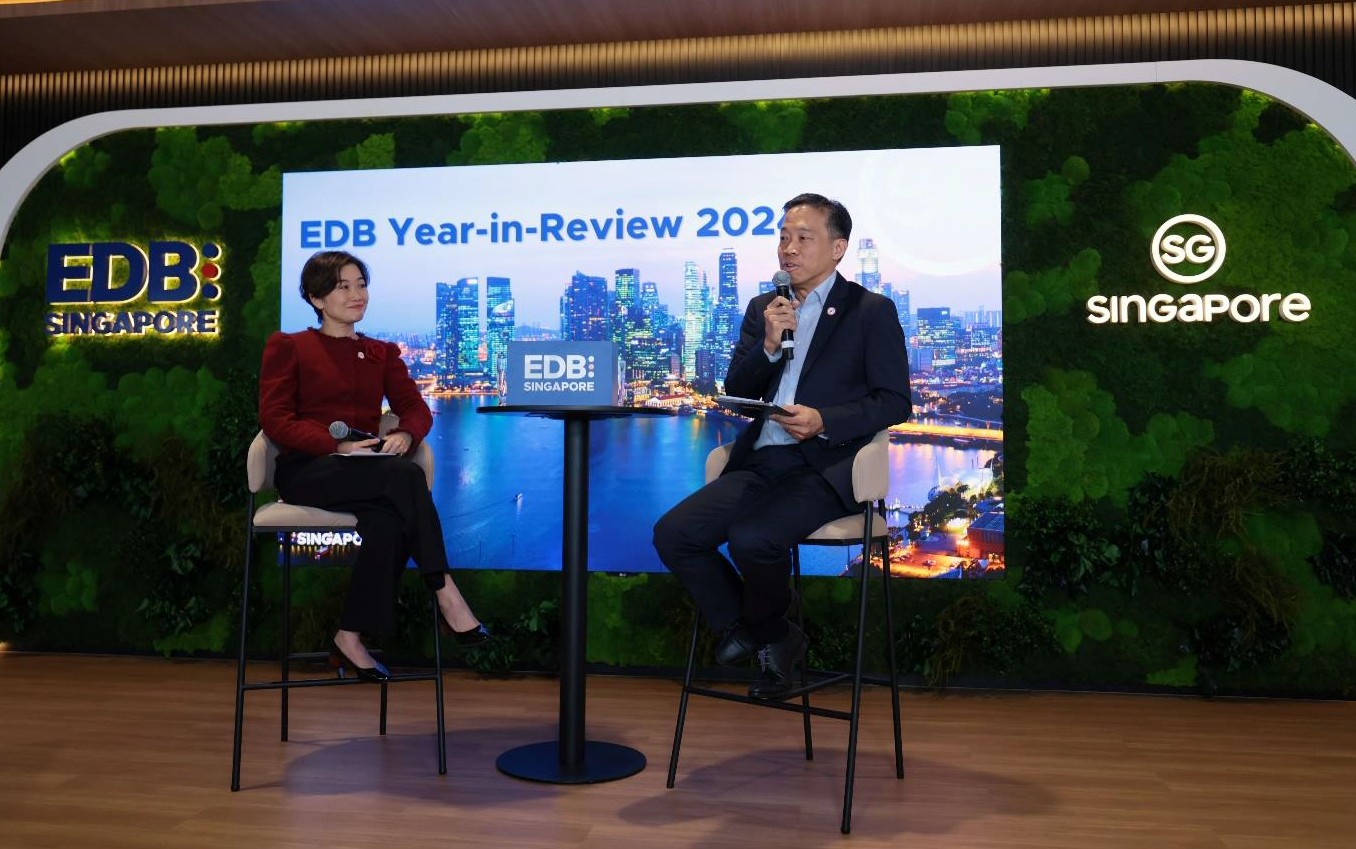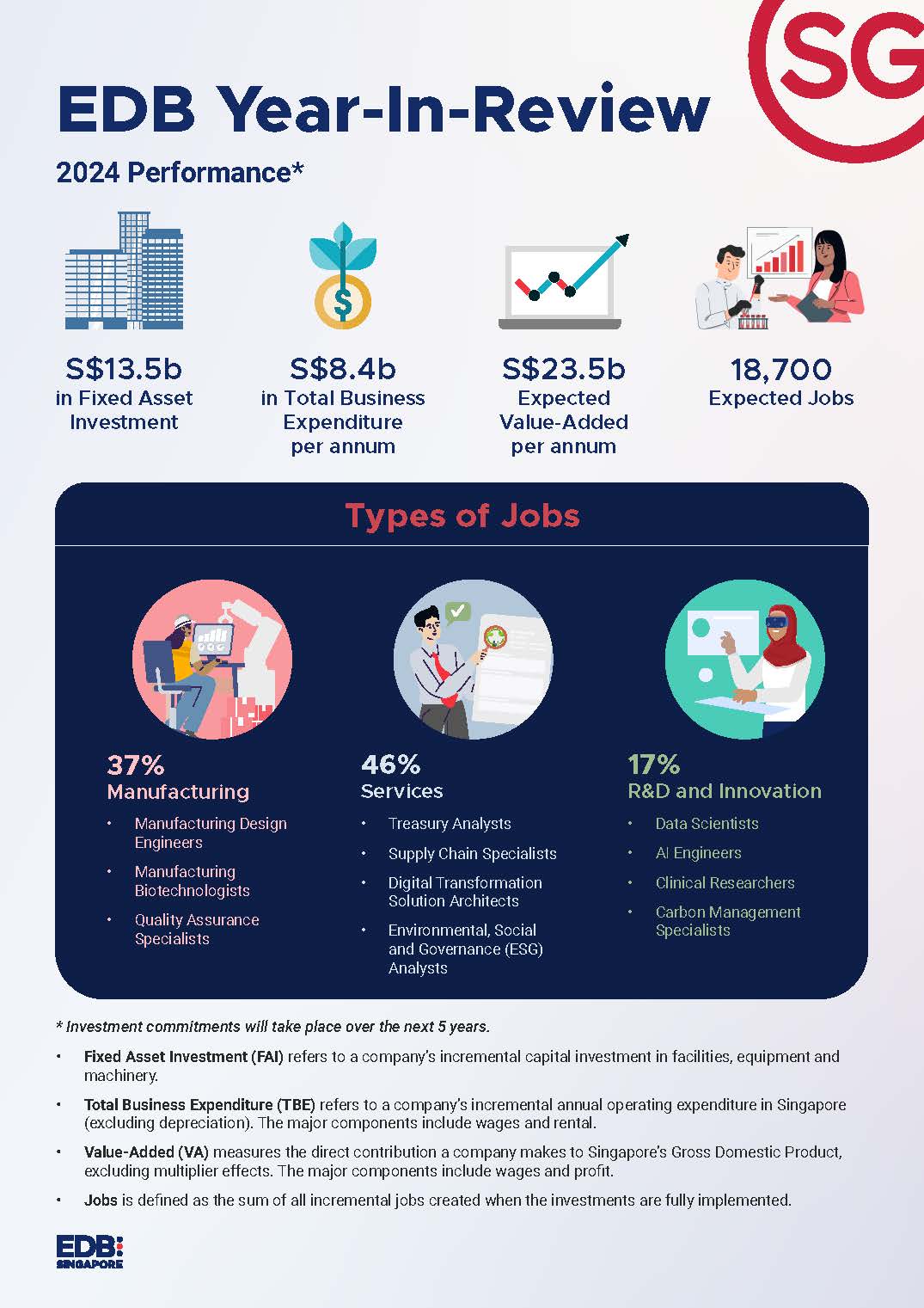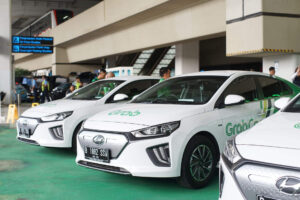
Singapore pulled in S$13.5 billion in foreign investments in 2024, up 6.3 per cent from 2024, and setting the stage for 18,700 new jobs, two-thirds of which are expected to pay over S$5,000 a month.
The electronics sector dominated foreign investments, making up approximately 57 per cent of total investment commitments, powered by a strong semiconductor outlook driven by emerging trends such as artificial intelligence (AI) and digitalisation.
This strong performance came despite geopolitical tensions and economic uncertainty, challenges that will persist this year, said Singapore’s Economic Development Board (EDB) managing director Jacqueline Poh at its annual review yesterday.
“Geopolitical and macroeconomic uncertainty, protectionist policies driven by economic nationalism, and trade frictions will weigh on corporate investment decisions,” she noted.
The competition for foreign investment is intensifying, with developed nations and regional hubs stepping up their game. As a result, global companies are reassessing their business strategies and footprints, which could delay investment decisions.
Still, Poh remains optimistic about Singapore’s ability to attract foreign investments in 2025. She pointed to the country’s strategic location, strong digital infrastructure, and supply chain diversity as key advantages. The broader realignment of global investments toward Southeast Asia also plays in Singapore’s favour.
Additionally, the nation’s commitment to digitalisation and sustainability strengthens its appeal, reinforcing its position as a top choice for investors.
In 2025, Singapore will have to stay nimble and opportunistic, attracting investments that play to Singapore’s strengths and hard to replicate elsewhere, said Poh, in her last report card on foreign investment. She will be moving over to the Ministry of Trade and Industry, where she will be the deputy secretary for trade.
EDB chairman Png Cheong Boon, who was also present at the year-in-review event, stressed that key sectors like AI, biotech, and the green economy will remain central to Singapore’s foreign investment strategy. However, EDB is also exploring new avenues to attract global capital.
Singapore will target emerging growth areas while strengthening its entire value chain, from manufacturing and headquarter function to innovation, R&D, and supply chain management. At the same time, EDB is focused on ensuring businesses have the talent and ecosystem partners needed to drive innovation.
In a wide-ranging Q&A with the media, the two EDB leaders addressed key factors shaping foreign investment, including the impact of American tariffs, semiconductor investments, and talent availability. Here’s what they had to say:
Impact of US tariffs on Singapore made products and services
Png pointed out that companies, especially those in manufacturing, make investments with the medium- and long-term view. They are looking at demand in the long term and where they can fulfill by building a new plant, and not as a response to tariffs. The location of the new plants will depend on, among other factors, competitiveness of the location and certainty that the plant will be built and operated.
Chinese companies investing in Singapore
When Chinese companies expand, they do so to develop new markets, acquire customers, or diversify their manufacturing footprint to serve global demand. Depending on their goals, Singapore can be a relevant location, playing a strategic role, whether as an international headquarters, a gateway to global markets, or a hub to manage worldwide operations.
EDB’s broader strategy is to cultivate a diverse mix of enterprises from different countries, ensuring Singapore remains a vibrant global business hub while building economic resilience against disruptions, said Png.
The expectation is simple – companies that operate here must follow local laws, respect local regulations, and create good jobs for Singaporeans, he stressed, adding that they applied equally to businesses from China and every other country.
Rise of trade nationalism
Trade nationalism is on the rise, and Singapore, as an open economy, is not immune to its effects. While Singapore runs a trade deficit with the US – importing more than it exports – tariffs and protectionist policies could still have a ripple effect on global trade and investment.
Like many countries, the Republic is vulnerable to the collateral impact of protectionist measures, said EDB managing director Poh.
To mitigate these risks, Singapore is diversifying its investment sources and industry mix. In addition to attracting large multinational corporations (MNCs), the country is also targeting smaller MNCs and startups. Another key focus is on global founders looking to establish new ventures in Singapore, strengthening the local innovation ecosystem.
US semiconductor export controls
The world does not revolve around semiconductors, said Poh, pointing out that Singapore’s investment portfolio spans biotech, precision medicine, and other high-growth sectors.
She emphasised that long-term business fundamentals – not tariffs – drive corporate expansion. Companies choose Singapore based on market potential, economic stability, and talent availability.
Beyond that, Singapore’s strategic advantages, including the absence of natural disasters such as earthquakes and its proactive approach to climate resilience, make it an attractive investment destination.
Creating better jobs for Singaporeans
The nature of investments determines job creation, Png explained. Some industries, particularly capital-intensive sectors, generate large numbers of jobs, while others, such as headquarters functions, focus on fewer but high-value roles.
With advancements in technology and AI, companies can achieve more with fewer people, he added. Many firms are already incorporating these innovations into their operations, which will be reflected in the types and number of jobs created, he noted.







